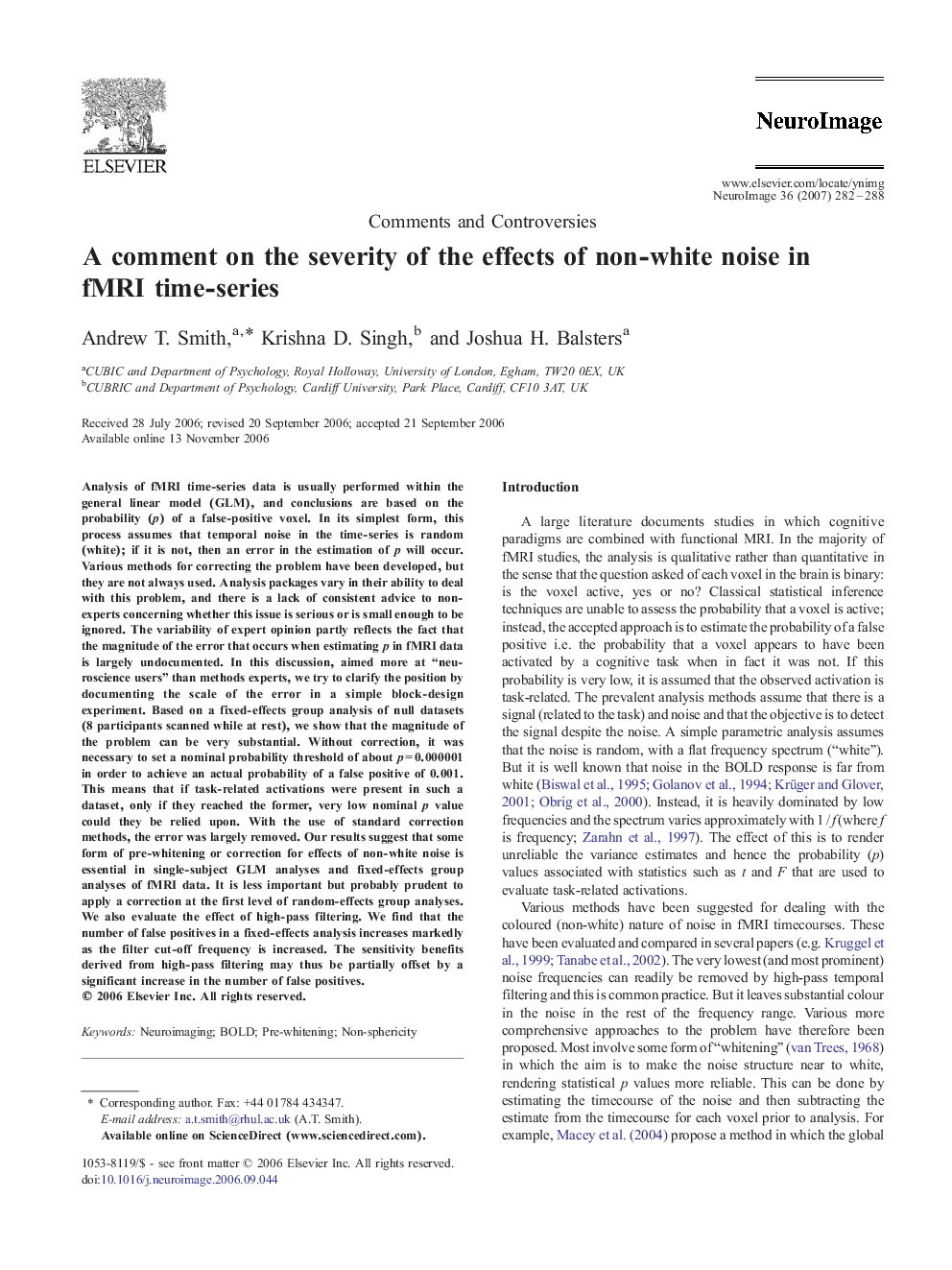| کد مقاله | کد نشریه | سال انتشار | مقاله انگلیسی | نسخه تمام متن |
|---|---|---|---|---|
| 6039928 | 1188832 | 2007 | 7 صفحه PDF | دانلود رایگان |
عنوان انگلیسی مقاله ISI
A comment on the severity of the effects of non-white noise in fMRI time-series
دانلود مقاله + سفارش ترجمه
دانلود مقاله ISI انگلیسی
رایگان برای ایرانیان
موضوعات مرتبط
علوم زیستی و بیوفناوری
علم عصب شناسی
علوم اعصاب شناختی
پیش نمایش صفحه اول مقاله

چکیده انگلیسی
Analysis of fMRI time-series data is usually performed within the general linear model (GLM), and conclusions are based on the probability (p) of a false-positive voxel. In its simplest form, this process assumes that temporal noise in the time-series is random (white); if it is not, then an error in the estimation of p will occur. Various methods for correcting the problem have been developed, but they are not always used. Analysis packages vary in their ability to deal with this problem, and there is a lack of consistent advice to non-experts concerning whether this issue is serious or is small enough to be ignored. The variability of expert opinion partly reflects the fact that the magnitude of the error that occurs when estimating p in fMRI data is largely undocumented. In this discussion, aimed more at “neuroscience users” than methods experts, we try to clarify the position by documenting the scale of the error in a simple block-design experiment. Based on a fixed-effects group analysis of null datasets (8 participants scanned while at rest), we show that the magnitude of the problem can be very substantial. Without correction, it was necessary to set a nominal probability threshold of about p = 0.000001 in order to achieve an actual probability of a false positive of 0.001. This means that if task-related activations were present in such a dataset, only if they reached the former, very low nominal p value could they be relied upon. With the use of standard correction methods, the error was largely removed. Our results suggest that some form of pre-whitening or correction for effects of non-white noise is essential in single-subject GLM analyses and fixed-effects group analyses of fMRI data. It is less important but probably prudent to apply a correction at the first level of random-effects group analyses. We also evaluate the effect of high-pass filtering. We find that the number of false positives in a fixed-effects analysis increases markedly as the filter cut-off frequency is increased. The sensitivity benefits derived from high-pass filtering may thus be partially offset by a significant increase in the number of false positives.
ناشر
Database: Elsevier - ScienceDirect (ساینس دایرکت)
Journal: NeuroImage - Volume 36, Issue 2, June 2007, Pages 282-288
Journal: NeuroImage - Volume 36, Issue 2, June 2007, Pages 282-288
نویسندگان
Andrew T. Smith, Krishna D. Singh, Joshua H. Balsters,